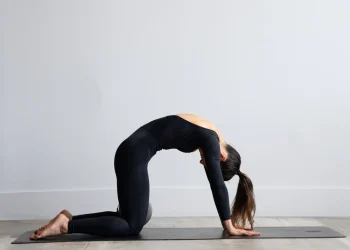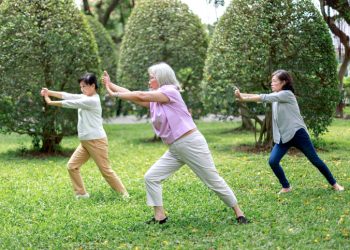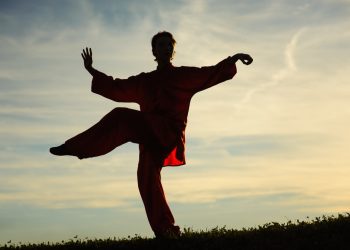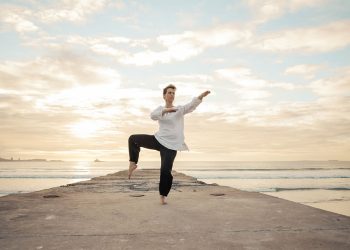Walking meditation is one of the most accessible and natural forms of mindfulness practice. Unlike seated meditation, which can feel challenging or uncomfortable for many beginners, walking meditation combines the benefits of physical movement with mental awareness. Whether you have two minutes or twenty, walking meditation offers a practical way to cultivate presence, reduce stress, and reconnect with your body and surroundings.
What Is Walking Meditation?
At its core, walking meditation is the practice of being fully present while walking. Instead of walking on autopilot while your mind races through to-do lists or replays conversations, you intentionally focus your attention on the physical sensations of walking and your immediate environment.
Walking meditation has roots in Buddhist traditions, where monks have practiced mindful walking for thousands of years. However, you don’t need to be Buddhist or even particularly spiritual to benefit from this practice. Think of it as a way to press pause on the constant mental chatter and simply be aware of what’s happening right now, in this moment, with each step you take.
The beauty of walking meditation lies in its simplicity. You’re not trying to achieve any special state or reach enlightenment. You’re simply walking and paying attention. That’s it. Yet this simple act can profoundly affect how you experience your daily life.
Benefits of Walking Meditation
Before diving into the how-to, it’s worth understanding why you might want to make walking meditation part of your routine.
For your mind: Walking meditation can help quiet anxious thoughts, improve concentration, and create mental space. Many people find it easier to let go of repetitive thinking while moving than while sitting still. The rhythm of walking naturally anchors your attention and can lead to a calmer, clearer mind.
For your body: This practice helps you develop better body awareness and can improve your physical balance and coordination. Because you’re moving slowly and deliberately, you might notice tension you’re holding or habitual ways you move that you’ve never been conscious of before.
For your daily life: Once you’ve practiced bringing mindful awareness to walking, you might find it easier to bring that same quality of attention to other activities. Washing dishes, waiting in line, or listening to a friend can all become opportunities for presence rather than sources of impatience or distraction.
Practical advantages: You can do walking meditation almost anywhere—in your home, garden, local park, or even in a hallway at work. You don’t need special equipment, a meditation cushion, or even much space. It’s also an excellent option if you find sitting meditation difficult due to restlessness, physical discomfort, or drowsiness.
Getting Started: The Basics
Choose Your Location
For your first attempts at walking meditation, choose a place where you can walk for at least ten to twenty paces in a straight line without obstacles. This could be:
- A quiet path in a park or garden
- A hallway in your home
- Your backyard or patio
- A quiet room with enough space to walk back and forth
Beginners often find it easier to practice in a relatively private space where you won’t feel self-conscious about walking slowly and deliberately. As you become more comfortable, you can practice anywhere, even on busy city streets.
Decide on Duration
Start small. Five to ten minutes is plenty for your first few sessions. You can gradually increase the duration as the practice becomes more familiar. Unlike seated meditation, where you sit for a set period, walking meditation can be naturally flexible. You might walk back and forth along a path for a specific time, or you might simply do one or two mindful walks during your day.
What to Wear
Comfort is key. Wear loose, comfortable clothing that allows easy movement. If you’re practicing outdoors, dress appropriately for the weather. Many practitioners prefer to practice barefoot when possible, as this can increase sensory awareness, but this is entirely optional. Wear whatever footwear (or none) feels most comfortable and safe for your location.
Basic Walking Meditation Technique
Here’s a simple, step-by-step approach to get you started:
Step 1: Begin with Standing Awareness
Before you start walking, stand still for a moment. Feel your feet on the ground. Notice the weight of your body, the feeling of your clothes, the temperature of the air. Take a few natural breaths. You’re not trying to change anything, just arriving in the present moment.
Step 2: Start Walking Slowly
Begin walking at a pace that’s noticeably slower than your usual walking speed. You’re not in a hurry to get anywhere. Each step should be deliberate and conscious. There’s no “correct” speed—some people walk very slowly, almost in slow motion, while others prefer a more natural but still moderate pace.
Step 3: Focus on Physical Sensations
Pay attention to the physical sensations of walking. You might focus on:
- The feeling of your feet lifting, moving through the air, and placing down again
- The shifting of your weight from one leg to the other
- The movement of your legs and the feeling in your muscles
- The swing of your arms
- The contact between your feet and the ground
Choose one aspect to focus on at first. Many beginners find it helpful to focus on the soles of their feet, noticing the sensation of lifting, moving, and placing with each step.
Step 4: Coordinate with Your Breath (Optional)
Some people like to coordinate their steps with their breathing—for example, taking three steps on the in-breath and three steps on the out-breath. This is entirely optional. If it helps you stay focused, use it. If it feels awkward or forced, just let your breath be natural and focus on the sensations of walking.
Step 5: When Your Mind Wanders
Your mind will wander. This is not a failure; it’s completely normal. You might find yourself thinking about dinner, work, or conversations from earlier in the day. When you notice your attention has drifted, simply acknowledge it without judgment and gently bring your focus back to the physical sensations of walking. Think of it as a gentle redirect, like guiding a curious puppy back to the path. This process of noticing and returning is actually the practice itself.
Step 6: Turning Around
When you reach the end of your walking path, pause for a moment. Feel yourself standing. Then mindfully turn around, noticing the sensations of shifting your weight and changing direction. Continue walking in the other direction with the same awareness.
Variations and Techniques
Once you’re comfortable with the basic practice, you can explore these variations:
Labeling: Mentally note each part of the step. As you walk, quietly say to yourself “lifting, moving, placing” or simply “left, right, left, right.” This verbal noting can help keep your mind focused.
Expanding awareness: Instead of focusing narrowly on your feet, expand your awareness to include your whole body walking, the sounds around you, the feeling of air on your skin, and what you can see in your peripheral vision. This open awareness can feel more natural for some people.
Faster walking: Once you’ve practiced slow walking meditation, try bringing the same quality of awareness to normal or even brisk walking. This makes the practice more portable and applicable to everyday life.
Counting steps: Count your steps up to ten, then start again at one. This gives your mind something concrete to focus on and can be especially helpful on busy days when your mind is particularly active.
Tips for Developing a Regular Practice
Start with realistic expectations. You don’t need to practice for an hour daily to benefit. Even five minutes of walking meditation a few times a week can make a difference. Consistency matters more than duration.
Integrate it into existing routines. Practice walking meditation as you go from your car to your office, from one room to another in your home, or during a work break. These micro-practices add up and help make mindfulness a natural part of your day.
Be patient with yourself. Some days your mind will be calm and focused. Other days it will feel like you’re wrestling with a tornado of thoughts. Both experiences are part of the practice. The quality of your meditation isn’t determined by how calm you feel, but by your willingness to keep showing up and practicing awareness.
Keep it simple. There’s no need to make this complicated. You’re just walking and paying attention. If you find yourself getting tangled up in technique or wondering if you’re doing it “right,” step back and return to the basics: slow down, feel your feet, notice what’s happening.
Mix it with seated practice. If you practice seated meditation, try alternating periods of sitting and walking. Many meditation retreats use this combination, as it provides variety and can help when physical discomfort or sleepiness arises during sitting.
Use it as needed. Walking meditation can be particularly helpful when you’re feeling anxious, restless, stuck in your head, or need a reset during a stressful day. You don’t always need to practice in a formal way—sometimes just taking a mindful walk around the block can shift your entire state of mind.
Join others if possible. While walking meditation is perfectly suited to solo practice, some people enjoy practicing with a group or a friend. Many meditation centers offer guided walking meditation sessions, which can provide structure and encouragement, especially when you’re starting out.
Common Challenges and Solutions
“I feel silly walking so slowly.” This is completely understandable, especially if others are watching. Remember that you’re doing something valuable for yourself. With time, self-consciousness usually fades. Until then, you might prefer practicing in private spaces or at a more moderate (though still deliberate) pace in public.
“My mind won’t stop thinking.” That’s actually normal. The goal isn’t to stop thinking but to notice when you’re lost in thought and gently return to the sensations of walking. Each time you notice and return, you’re successfully practicing meditation.
“I feel impatient or bored.” Walking slowly can indeed trigger feelings of impatience, especially in our fast-paced culture. Rather than seeing this as a problem, consider it valuable information. Noticing impatience when it arises is actually a form of mindfulness. Can you observe the impatience without needing to act on it?
“I don’t have anywhere to practice.” You need surprisingly little space. Even a ten-foot length of hallway or room works fine. Some people practice walking in a circle or figure-eight pattern in small spaces.
Moving Forward
Walking meditation is less about perfecting a technique and more about cultivating a quality of attention you can bring to any moment of your life. As you practice, you might notice you’re more aware of how you move through the world, more present with the people around you, and more capable of finding calm even in the midst of a busy day.
The most important step is always the next one. Whether you’ve been practicing for years or are about to take your first mindful steps, approach each session with curiosity and kindness toward yourself. That’s the true spirit of walking meditation—not striving toward some ideal, but fully showing up for the simple miracle of being alive and aware in this moment, one step at a time.
Start today. Find a quiet spot, take a breath, and begin walking with awareness. Your practice doesn’t need to be perfect; it just needs to be yours.
- what is tai chi walking meditation
- tai chi as walking meditation
- meditation techniques for beginners
- developing mindful walking practice
- meditative practice for beginners
- benefits of walking meditation
- mindfulness in walking for beginners
- tai chi walking for meditation beginners
- how to start meditation walking
- intentional meditation walking






